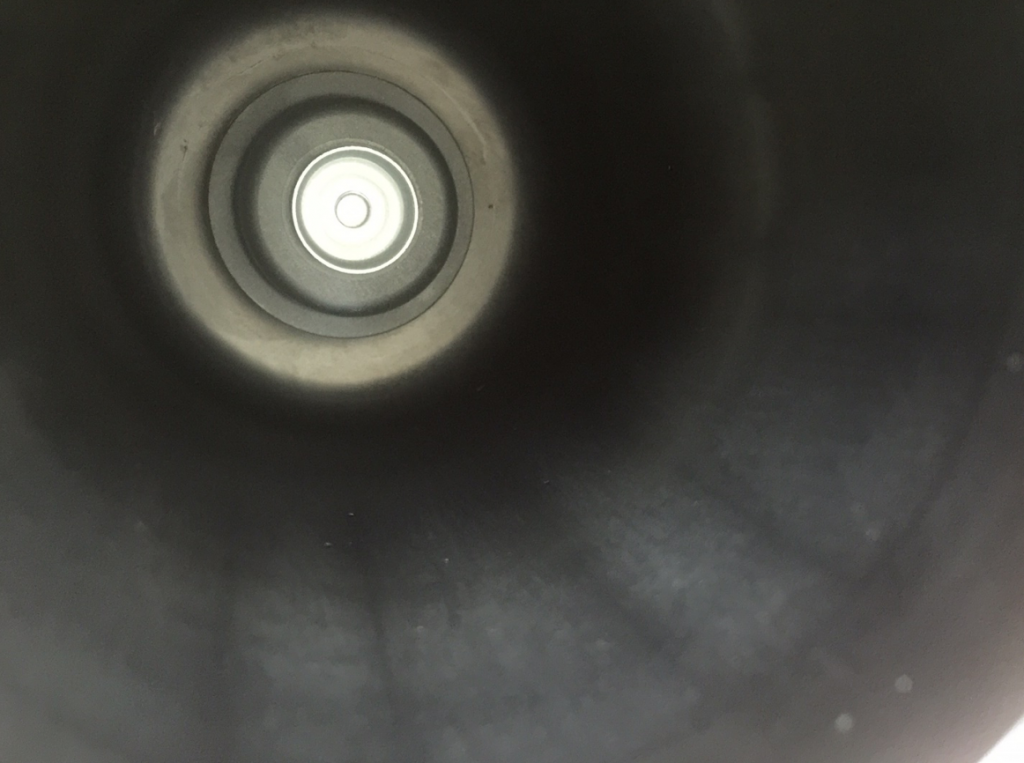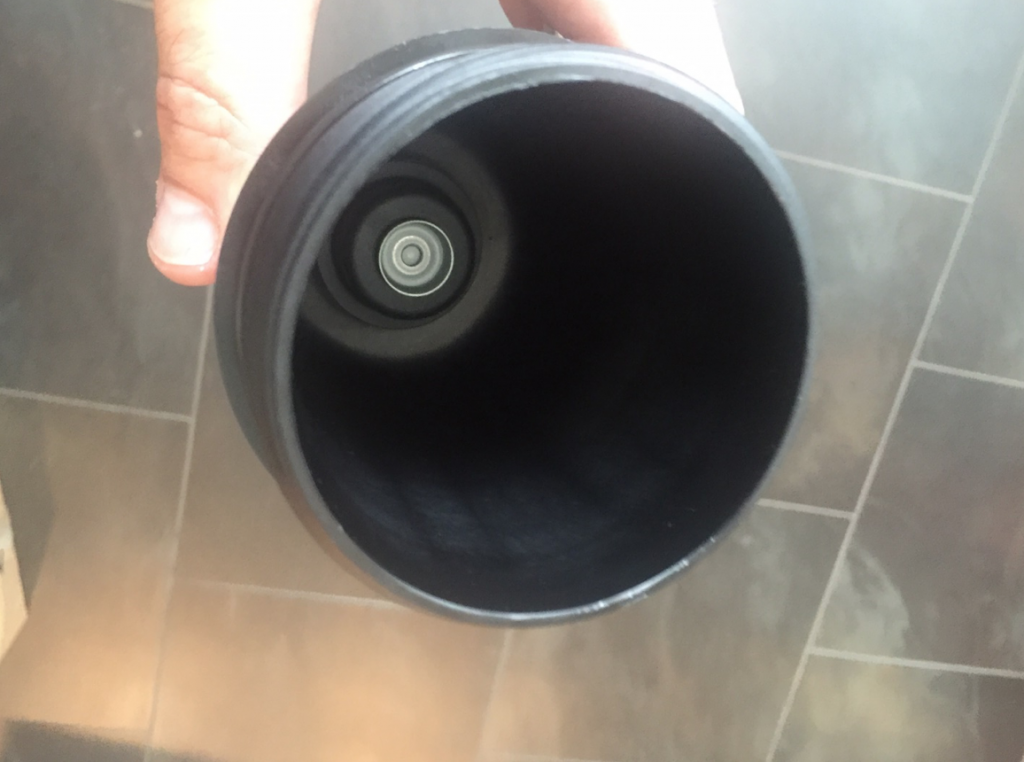It is a familiar refrain around here at Midwest Performance Cars; “DO NOT NEGLECT YOUR OIL CHANGES! It’s the cheapest form of protection against premature engine wear and potential failure.”
They say that a picture is worth a thousand words however, so here are a couple of pics which will hopefully illustrate the point. Imagine the 5, 7, or 10 quarts of engine oil being pumped throughout your car’s engine for 6 months or 7500 mile, with this cute little paper filter being the only thing working to trap contaminants, microscopic metal bits, and any other substances that can damage precision engine surfaces and cause major, EXPENSIVE problems. Is it really worth trying to get another few hundred or thousand miles out of this filter and the old, broken-down, dirty oil?
Automobile owners should also be aware that vehicle manufacturers are incentivized to keep pushing out longer and longer recommended service intervals, with oil change time and mileage being the most common one to be extended. You might be asking yourself, “Why would they do that, what do they care how often I change my oil? Wouldn’t they WANT me to change the oil more frequently?”
Not necessarily. Keep in mind that manufacturer recommended service intervals affect the “cost to own” numbers, and manufacturers do not want their cars to be known and rated as more expensive to own and maintain. Hence the advent, along with synthetic oil development, of the 10,000 mile oil change interval. You should see how filthy even the highest quality synthetic engine oil becomes after just 5000 miles! By the time you’ve hit 10,000, it looks like tar and smells like a toxic stew of petroleum compounds and burned & unburned fuel. That is why at Midwest Performance Cars, we recommend an oil change interval of 7500 miles for MOST vehicles.


Many engine oil systems have built-in pressure relief devices, which function to keep oil flowing when things may be getting plugged up. As this little filter struggles to trap gunk after 5000 miles, without blowing apart, that pressure relief system will begin to let a certain amount of oil bypass the filter, so it does not even get a cursory cleaning. In Porsches, the oil relief mechanism is a small spring-loaded valve at the bottom of the filter cup, pictured below:


A pressure relief mechanism such as this is just one in a chain of devices designed to regulate and distribute oil throughout the engine. It is not uncommon for these relief valves to fail over time, and their failure results in large quantities of unfiltered oil circulating in oil passages, hydraulic actuators, down into the oil pan where heavier contaminants and metal bit collect, and back through the oil pump, around and around. Driving a few hundred or even thousand miles with a weakened or failed pressure relief valve will usually not harm your engine, but driving through a few improper oil change procedures where the valve does not get replaced, or driving well past your oil change interval CAN cause serious harm. This all can be avoided for the price of a proper oil service!
One component of performing a proper oil service is TIME. There is no getting around the fact that it takes time to get the maximum drainage of contaminated oil out of your engine. At MPC, our techs put the vehicle on the rack and begin draining the oil immediately, then use their remaining time to perform a complete digital, tablet-based inspection of the vehicle, complete with pictures, video, and descriptions. You might be surprised at how much oil continues to make its way down to the drain hole after the first 15 minutes. And having specialized knowledge of the particular model vehicle we are working on helps to set us apart from our competition. Did you know, for instance, that on a Porsche Cayenne hybrid, removing the oil filter without allowing it to pre-drain can result in excess oil splashing down into the hybrid-electric drive motor, which can render it totally inoperable? That hybrid unit costs more than $20,000 to replace and comprises a large portion of the value of a hybrid Cayenne. It is pretty crucial that your technician is aware of this ultra-sensitive component and how to protect it during an oil service!
Hopefully these pictures serve to illustrate why it is so important to keep up on your regular oil changes, and to have your vehicle serviced at a quality shop that knows the particulars of your vehicle, and appreciates that doing the job correctly takes a bit more time, not 5, 10, or 15 minutes. The life of your car’s engine depends on it, and these protection devices in the lubrication systems are not designed to last forever. So be smart with your automotive dollars, and give your vehicle the care it needs, so it can keep you rolling for many years to come!